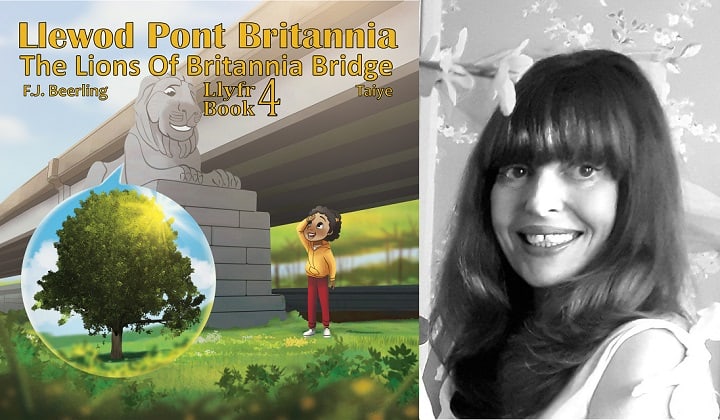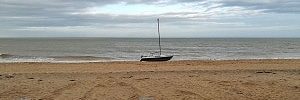
Birchington children’s author Faye Beerling is celebrating the release of a new series of tales based on the history of a world-famous bridge designed and built by Robert Stephenson.
The Lions of Britannia Bridge is a four book tale written in both English and Welsh and commissioned by the Menai Bridge Community Heritage Trust.
Book 1 was published in 2020 and now book 4 completes the set. Books 2-4 are illustrated by Lucy Gilbert and Taiye Okoh.
Already an accomplished author, Faye has turned her hand to digital design and as well as writing the books she designed the layout, formatted the files and prepared them for print. She says she is especially proud of the front and back cover designs.
The books will be launched at the National Eisteddfod in Pwllheli, North Wales on 12th August in the Science & Technology Pavilion with an invited audience of representatives from funding organisations, STEM Ambassadors (Science, Technology, Engineering & Maths) and local children.
The Lions of Britannia Bridge tells the story of a young girl called Uarda, who likes solving puzzles and wants to be an engineer. She travels to the Menai Strait in Wales to see the Britannia Bridge, and while there strikes up a friendship with one of the stone lions that guard the entrance to the bridge.
Faye said: “I’m always keen to keep our heritage and history alive and am already on the lookout for my next big book project. I would love to hear from anyone who has a story to tell.”
Britannia Bridge crosses the Menai Strait between the Isle of Anglesey and city of Bangor. It was originally designed and built by noted railway engineer Robert Stephenson as a tubular bridge of wrought iron rectangular box-section spans for carrying rail traffic.
Its importance was to form a critical link of the Chester and Holyhead Railway’s route, enabling trains to directly travel between London and the port of Holyhead, facilitating a sea link to Dublin.
On 3 March 1966, the Britannia Bridge received Grade II listed status.

